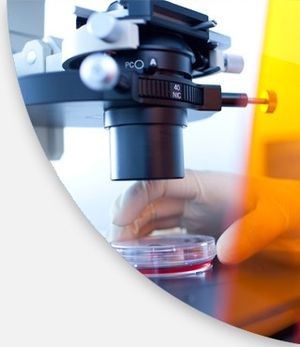Novel and Very Early Detection of Preeclampsia

Problem being addressed[edit | edit source]
500 million mothers die each year from child-birth related causes in developing nations. A major cause of maternal mortality is eclampsia, which can kill the mother and the baby during childbirth. Therefore, detection of preeclampsia is vital to treatment.
Detailed description of the solution[edit | edit source]
Deregulation of the protein HtrA3 has been linked to preeclampsia. Detection of the protein via antibody assays has been developed to measure the level of HtrA3 in human blood. This solution can lead to earlier and more definitive detection of preeclampsia if proved effective.
Designed by[edit | edit source]
- Designed by: Dr. Guiying Nie
- Location: Prince Henry's Institute of Medical Research in Australia
- Manufacturing: This device is currently under development in Australia.
Funding Source[edit | edit source]
This device received funding from the Bill and Melinda Gates Grand Challenges Explorations Grant and the National Health and Medical Research Council.
References[edit | edit source]
Peer-reviewed publication[edit | edit source]
Bowden MA, Di Nezza-Cossens LA, Jobling T, Salamonsen LA and Nie G (2006) Serine proteases HtrA1 and HtrA3 are down-regulated with increasing grades of human endometrial cancer. Gynecol Oncol 103: 253-260
Bowden MA, Drummond AE, Salamonsen LA, Findlay JK, and Nie G (2009) Evolutionary conservation of mammalian HtrA3 and its developmental regulation in the rat ovary. J Exp Zool Part B 312: 701-713
Bowden MA, Li Y, Findlay JK, Salamonsen LA and Nie G (2008) HtrA3 expression in non-pregnant rhesus monkey ovary, endometrium and at the maternal-fetal interface during early pregnancy. Reprod Biol Endocrinol 6: 1-11
Li Y, Puryer M, Lin E, Hale K, Salamonsen LA, Manuelpillai U, Tong S, Chan W, Wallace EM and Nie G (2011) Placental HtrA3 is regulated by oxygen tension and serum levels are altered during early pregnancy in women destined to develop preeclampsia. J Clin Endocrinol Metab 96: 403-411
Nie G (2008) The critical role of a novel protease in normal and abnormal placentation. Biol Reprod 78: p275
Nie G, Li Y, He H, Findlay JK and Salamonsen LA (2006) Serine protease HtrA3 possessing an IGF binding domain is specifically expressed in the maternal-fetal interface during placentation in the mouse. Placenta 27: 491-501
Nie G, Li Y, Hale K, Okada H, Manuelpillai U, Wallace EM and Salamonsen LA (2006) Serine peptidase HtrA3 is closely associated with human placental development and elevated in pregnancy serum. Biol Reprod 74: 366-374
Nie G, Hampton A, Li Y, Findlay JK, Salamonsen LA (2003) Identification and cloning of two isoforms of human HtrA3, characterisation of its genomic structure and comparison of its tissue distribution with HtrA1 and HtrA2. Biochem J 371: 39-48
Nie G, Li Y, Minoura H, Batten L, Ooi GT, Findlay JK and Salamonsen LA (2003) A novel serine protease of the mammalian HtrA family is dramatically up-regulated in mouse uterus coinciding with placentation. Mol Hum Reprod 9: 279-290
Singh H, Endo Y, Nie G. (2011) Decidual HtrA3 negatively regulates trophoblast invasion during human placentation. Human Reprod 26: 748-757
Singh H, Makino S-I, Endo Y and Nie G (2010) Inhibition of HTRA3 stimulates trophoblast invasion during human placental development. Placenta 31: 1085-1092
Singh H, Makino S, Endo Y, Li Y, Stephens AN and Nie G (2012) Application of the wheat-germ cell-free translation system to produce high temperature requirement A3 (HtrA3) proteases. BioTechniques 52: 23-28
Other internally generated reports[edit | edit source]
"Grants Awarded." Grand Challenges in Global Health. N.p., n.d. Web. 6 Feb. 2013. Link available here.
Externally generated reports[edit | edit source]
"Grants Awarded." Grand Challenges in Global Health. N.p., n.d. Web. 6 Feb. 2013. Link available here.
"Novel and Very Early Detection of Preeclampsia - Maternal and Neonatal Directed Assessment of Technology." Maternal and Neonatal Directed Assessment of Technology. N.p., n.d. Web. 6 Feb. 2013. Link available here.